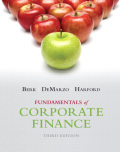
Concept explainers
Exchange rate:
An exchange rate can be defined as the price of the currency of a country with respect to the currency of another country. An exchange rate has two components. This includes the foreign currency and the domestic currency.
To determine:
The concept of an exchange rate.
Explanation of Solution
Exchange rate refers to the current market for which the currency of a country may be exchanged for the currency of another currency. In other words, it is the price for a currency denominated in another currency.
Example: It might cost an Indian citizen Rs. 63.44 to buy 1 U.S. Dollars and Rs. 76.22 to buy 1 Euro.
Since, most of the exchange rates are market prices, they are likely to change every single day and sometimes even within a particular day. A market exists for such trades which remains opens all hours of the day during the week called the Foreign Exchange or the Forex market.
Hence, it can be concluded that the exchange rate is the price of the currency of a country with respect to the currency of another country.
Want to see more full solutions like this?
Chapter 23 Solutions
EBK FUNDAMENTALS OF CORPORATE FINANCE
- Anthony jacksons proarrow_forwardHello tutor this is himlton biotech problem.arrow_forwardYan Yan Corp. has a $2,000 par value bond outstanding with a coupon rate of 4.7 percent paid semiannually and 13 years to maturity. The yield to maturity of the bond is 5.05 percent. What is the dollar price of the bond?arrow_forward
 Essentials Of InvestmentsFinanceISBN:9781260013924Author:Bodie, Zvi, Kane, Alex, MARCUS, Alan J.Publisher:Mcgraw-hill Education,
Essentials Of InvestmentsFinanceISBN:9781260013924Author:Bodie, Zvi, Kane, Alex, MARCUS, Alan J.Publisher:Mcgraw-hill Education,

 Foundations Of FinanceFinanceISBN:9780134897264Author:KEOWN, Arthur J., Martin, John D., PETTY, J. WilliamPublisher:Pearson,
Foundations Of FinanceFinanceISBN:9780134897264Author:KEOWN, Arthur J., Martin, John D., PETTY, J. WilliamPublisher:Pearson, Fundamentals of Financial Management (MindTap Cou...FinanceISBN:9781337395250Author:Eugene F. Brigham, Joel F. HoustonPublisher:Cengage Learning
Fundamentals of Financial Management (MindTap Cou...FinanceISBN:9781337395250Author:Eugene F. Brigham, Joel F. HoustonPublisher:Cengage Learning Corporate Finance (The Mcgraw-hill/Irwin Series i...FinanceISBN:9780077861759Author:Stephen A. Ross Franco Modigliani Professor of Financial Economics Professor, Randolph W Westerfield Robert R. Dockson Deans Chair in Bus. Admin., Jeffrey Jaffe, Bradford D Jordan ProfessorPublisher:McGraw-Hill Education
Corporate Finance (The Mcgraw-hill/Irwin Series i...FinanceISBN:9780077861759Author:Stephen A. Ross Franco Modigliani Professor of Financial Economics Professor, Randolph W Westerfield Robert R. Dockson Deans Chair in Bus. Admin., Jeffrey Jaffe, Bradford D Jordan ProfessorPublisher:McGraw-Hill Education





